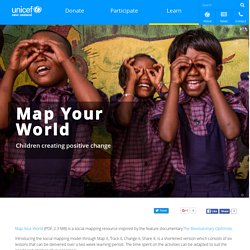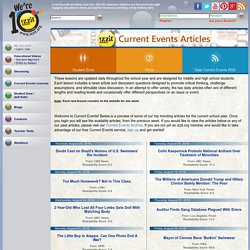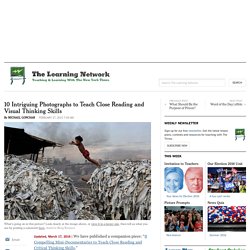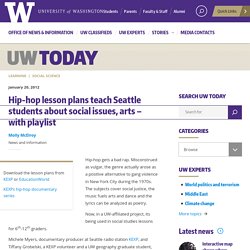

Funny Questions To Ask Friends - Get To Know You Questions. Take 5ive - Growing Minds. Very Short Stories for High School & Middle School. If your students are struggling to get into the short story, or you're pressed for time, here are some very brief stories to get you started.

They're not as short as Hemingway's famous six-word story (For sale: baby shoes, never worn.), but they're manageable even for reluctant readers. Most are under 2,000 words; I've included an approximate word count where I could. These stories offer a complete reading experience with great economy of words.
Looking for Short Stories on a Particular Subject or Theme? The Story of an Hour | Kate Chopin A woman is given the news that her husband has been killed in a railroad accident. Read "The Story of an Hour" (1,020 words) The Secret Life of Walter Mitty | James Thurber A passive and put-upon man has a series of daydreams while driving his wife on her weekly errands. Read "Walter Mitty" (2,080 words) The Use of Force | William Carlos Williams A doctor makes a house call on a sick young girl. Read "The Use of Force" (1,565 words) Girl | Jamaica Kincaid.
A global network of young changemakers. Map Your World. Map Your World (PDF, 2.3 MB) is a social mapping resource inspired by the feature documentaryThe Revolutionary Optimists.

Introducing the social mapping model through Map it, Track it, Change it, Share it; is a shortened version which consists of six lessons that can be delivered over a two week learning period. The time spent on the activities can be adapted to suit the needs and abilities of your learners. Download the Technology Guidelines (PDF, 2.3 MB) to assist you in setting up an online Map Your World project. The New Zealand version, based on the original resource (PDF), is aligned with the New Zealand Curriculum and the social inquiry process. If your group or class is interested in conducting a Map Your World project, and would like more information or support, contact Jacqui Southey Child Rights Education Advisor.
Izzit.org: Current Events. These lessons are updated daily throughout the school year and are designed for middle and high school students.

Each lesson includes a news article and discussion questions designed to promote critical thinking, challenge assumptions, and stimulate class discussion. In an attempt to offer variety, the two daily articles often are of different lengths and reading levels and occasionally offer different perspectives on an issue or event. Note: Each new lesson remains on the website for one week. Welcome to Current Events! Below is a preview of some of our top trending articles for the current school year.
10 Intriguing Photographs to Teach Close Reading and Visual Thinking Skills. Photo Updated, March 17, 2016 | We have published a companion piece: “8 Compelling Mini-Documentaries to Teach Close Reading and Critical Thinking Skills.”

Ever want your students to slow down and notice details when they read — whether they’re perusing a book, a poem, a map or a political cartoon? Young people often want to hurry up and make meaning via a quick skim or a cursory glance when a text can demand patience and focus. Closely reading any text, whether written or visual, requires that students proceed more slowly and methodically, noticing details, making connections and asking questions. This takes practice. We’ve selected 10 photos from The Times that we’ve used previously in our weekly “What’s Going On in This Picture?” Below, we offer ideas from students and teachers who have engaged with these images for ways to use them, or images like them, to teach close reading and visual thinking skills. 1. I stumbled across your site while looking for alternate ideas. 2. Hip-hop lesson plans teach Seattle students about social issues, arts – with playlist.
Learning | Social science January 20, 2012 Hip-hop gets a bad rap.

Misconstrued as vulgar, the genre actually arose as a positive alternative to gang violence in New York City during the 1970s. The subjects cover social justice, the music fuels arts and dance and the lyrics can be analyzed as poetry. Now, in a UW-affiliated project, its being used in social studies lessons for 6th-12th graders. Michele Myers, documentary producer at Seattle radio station KEXP, and Tiffany Grobelski, a KEXP volunteer and a UW geography graduate student, created the lessons partly because hip-hop is the main music of choice for kids this age – and they werent afraid of raising some eyebrows. “We wanted something edgy and fun,” said Myers, who came up with the lesson plans idea to complement two of her documentaries, Hip Hop: The New Seattle Sound and Masters of Turntablism.
Download the lessons here. PBL ideas for reading enrichment.